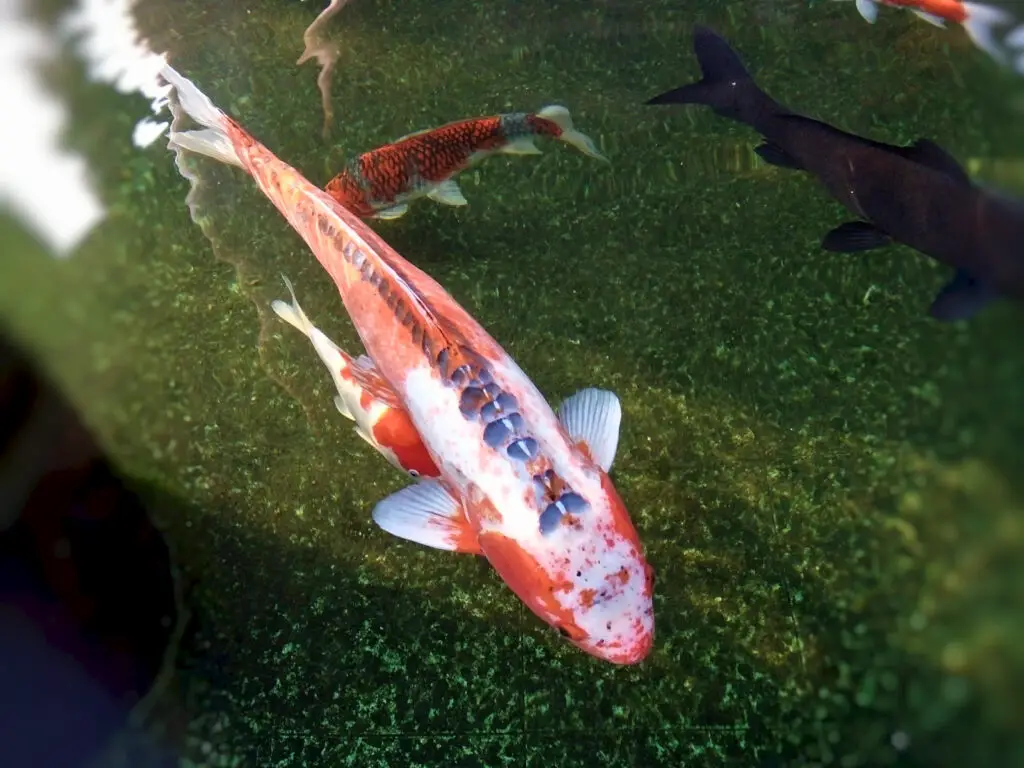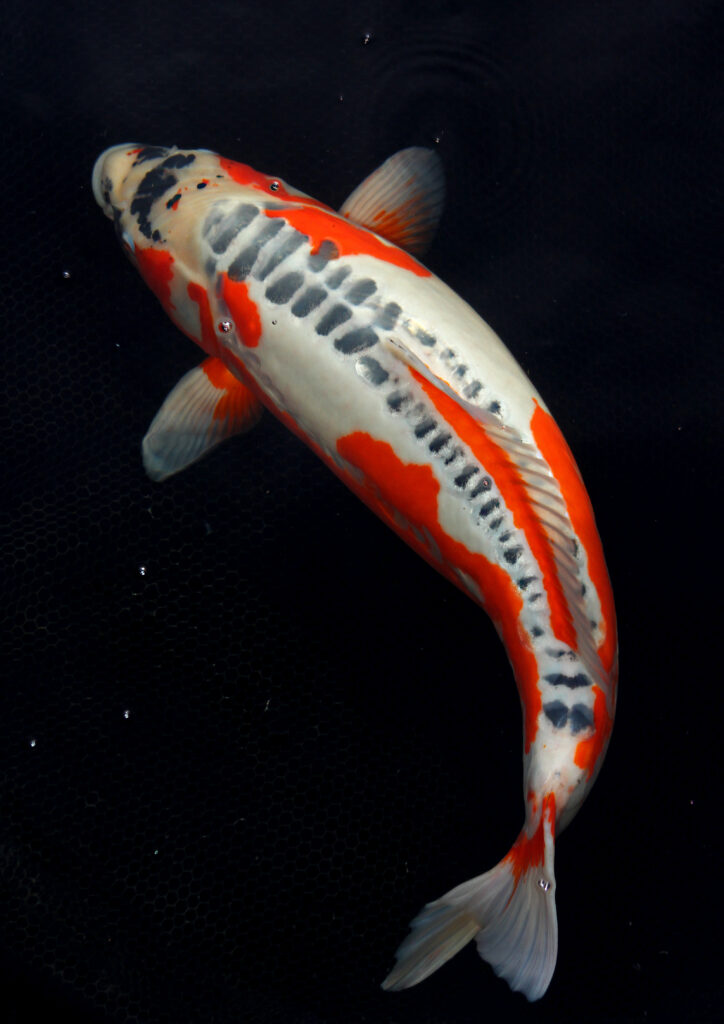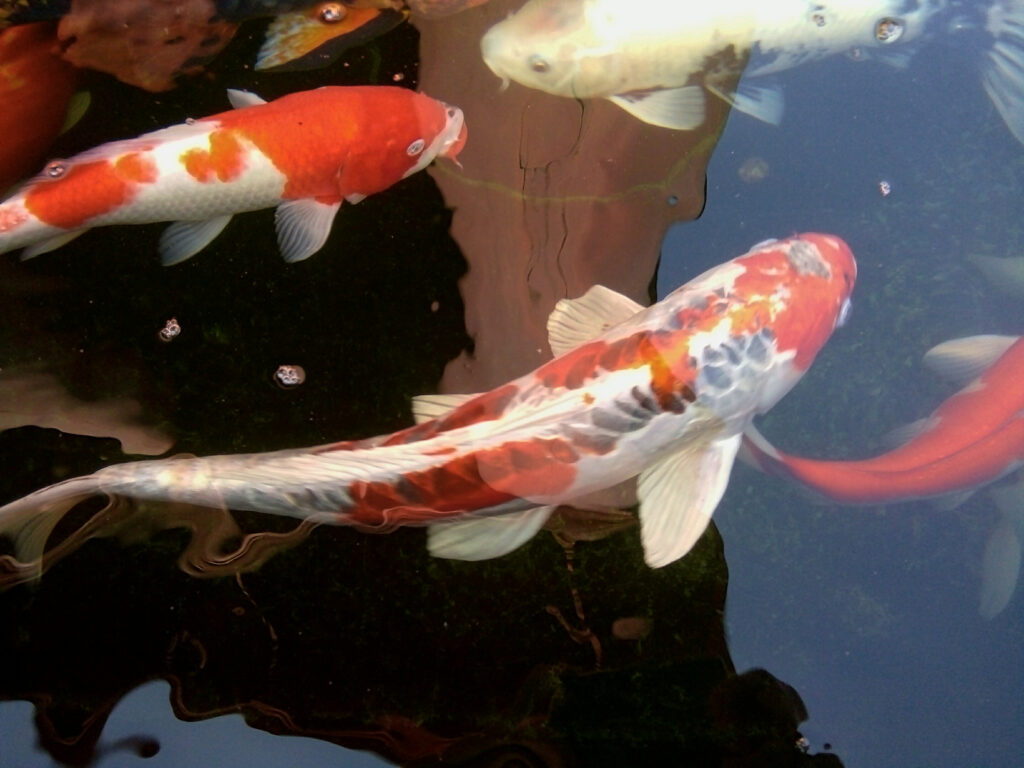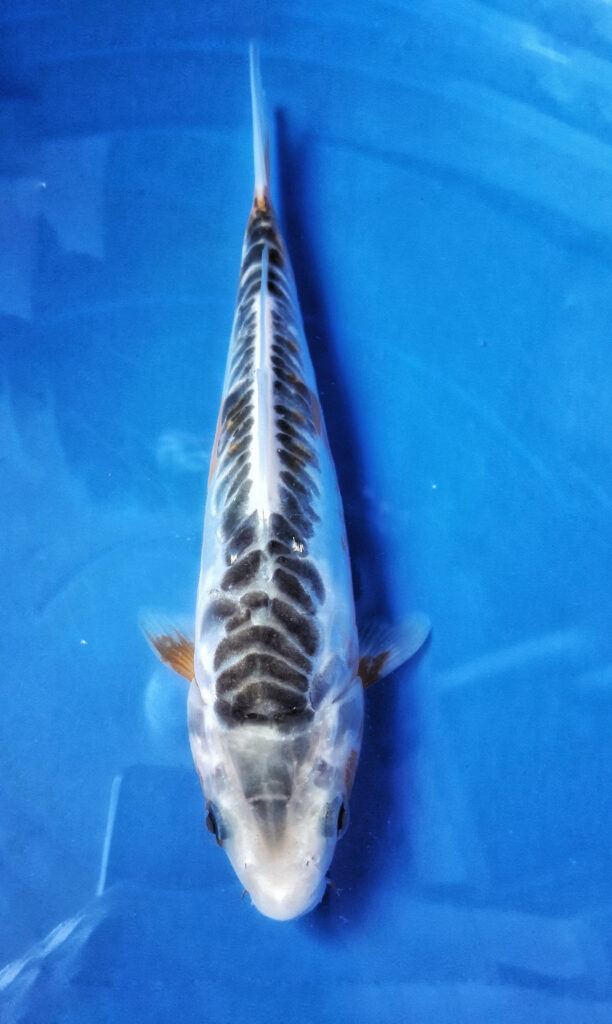
Shusui koi fish are some of the most popular and desired koi. This is because they have a striking appearance and unique characteristics. In addition, shusui koi are often used for shows and competitions and make a special addition to any fishpond. So, how to go about choosing an award-winning koi?
Shusui koi should have a slight blue hue on their head and bodies. In addition, they should have two rows of large, bluish-black scales running along each side of their dorsal fins, connecting into one row at the tail end. Shusui koi should have a streamlined body and symmetrical markings.
Pro Tip: If you’re tired of wasting money and making costly mistakes on the koi-keeping hobby or are thinking about buying koi fish but don’t know where to start, I strongly suggest you check out this ebook. I recently read this ebook, and it contains SO much useful information, such as:
- 3 proven steps to identify koi fish diseases
- WARNING: 3 things you should NEVER do when it comes to caring for koi
- When to seek professional help when it comes to looking after your koi

Since shusui koi already have such a unique appearance, the rest of their markings aren’t very important when shopping for a prime example. The main factor that influences the quality of a shusui koi is the scales on its back. If they are uniform and single row on each side of the dorsal fin, this is a high-quality shusui koi. In this article, we discuss how to go about choosing the perfect shusui koi.
How To Choose The Perfect Shusui Koi

When choosing a good shusui koi, you must consider the size, color, and uniformity of the scales on its back. Shusui koi was created by crossbreeding Asagai Koi and a German scaleless koi, known as mirror koi. Asagai koi is another beautiful koi variety known for its stunning blue hue. This same blue color can be detected on the shusui koi. When choosing a shusui koi, you must look for the following:
- Large, uniform scales. Shusui koi have large, bluish-black scales on their backs. These scales are bigger than those of other koi varieties. The scales should all be uniform in size and color.
- A single row of scales on each side of the dorsal fin. In addition to being uniform in size and color, a shusui koi should have one row of scales on either side of its dorsal fin. These scales join to form a single row towards the koi’s tail.
- A white or light blue head and body. Shusui koi should have a light blue or white head. This color should also be present in the unpigmented parts of their bodies, although colored markings are also acceptable.
- A narrow, streamlined body. Many koi varieties share this trait. A shusui koi should have a narrow, streamlined body.
Shusui koi were the first recognized scaleless koi variety and have been bred since the early 1900s. Although the bluish-black scales on its back are the most important factor of a shusui koi, there are also different types of shusui koi. They have specific characteristics to adhere to when choosing an award-winning shusui koi. These are the different varieties of shusui koi:
- Hi shusui koi
- Ki shusui koi
- Hana shusui koi
- Butterfly shusui koi
- Tancho shusui koi
Each of these varieties of shusui koi are unique. Therefore, they have different requirements when entering a competition or when you want to buy a prime shusui koi. We will now discuss choosing the best koi fish of each of these varieties.

1. Choosing The Best Hi Shusui Koi
Hi shusui koi are among the most popular shusui koi available. This koi has orange or reddish-orange streaks running along its sides. When choosing a Hi shusui koi, you must look for one with symmetrical markings on each side. In addition, ensure that the shusui koi’s head is free of blemishes and the coloration doesn’t appear too much on the face.
Apart from these characteristics, a Hi shusui koi should still have a neat row of large scales on its back. In addition, it should have a light blue or white head with the same color on its body.
2. Choosing The Best Ki Shusui Koi
Ki shusui koi have similar characteristics to Hi shusui koi. The only difference is that Ki shusui koi have yellow rather than orange or red coloration. Ki shusui koi are rarer than Hi shusui. Therefore, you will have an immediate advantage when entering a Ki shusui koi into a competition.
Look for symmetrical Ki (yellow) patterns on either side of the fish, and you might just have a winner. Dark spots or blemishes on a shusui are negatively judged unless they occur because of handling the fish when arriving at the competition.
All koi tend to develop black markings when they are handled. However, these markings are temporary, and you don’t have to worry about them.
3. Choosing The Best Hana Shusui Koi
Hana means flower in Japanese, and these shusui koi fish get their name from the flower-like patterns on their sides. Hana shusui is rarely entered into competitions, as their markings aren’t uniform. However, Hana shusui koi are unique and will make a beautiful addition to your pond or aquarium.
Hana shusui koi mostly have orange or reddish markings. While there is Hana shusui koi with yellow markings, they are extremely rare. When looking for a good Hana shusui koi, look for one with fairly symmetrical markings on each side.
The Hana markings should not extend across the entire body, as Hi or Ki shusui koi’s markings do. Instead, the marking will be more circular or flower-shaped. Consider the qualities of a good shusui koi, such as the scale pattern and size, when choosing a Hana shusui koi.
4. Choosing A Butterfly Shusui Koi
Butterfly koi are unique in their own right, with their beautiful, wing-like fins attracting every passerby’s attention. Add the unique features of a shusui koi, and you’re sure to have a winner. When choosing a Butterfly shusui koi, opt for one with symmetrical patterns on each side and solid and undamaged fins.
Butterfly koi often have damaged or split fins due to handling. However, a high-quality Butterfly shusui koi will have undamaged fins and all the characteristics of an excellent shusui koi, including an unblemished white or light blue head.
5. Choosing A Tancho Shusui Koi
Tancho shusui koi have a red marking at the top of their heads. You’ll notice that we’ve constantly mentioned that the head of a high-quality shusui koi should be white or light blue. Therefore, a Tancho shusui koi is not the most popular one to enter into a competition, as the red mark on its head will be judged negatively.
However, Tancho shusui koi are unique and beautiful. Any of the above-mentioned shusui koi can also be classified as a Tancho shusui koi if it has a red mark on its head. Although these shusui koi are not highly regarded when competing, they still make an excellent addition to any aquarium or pond.
Conclusion
Shusui koi have been bred since the early 1900s. They are a cross between Asagai koi and a scaleless German carp. These koi have a unique appearance and are prized at competitions. A good shusui koi fish should have a light blue or white head and a single row of large, bluish-black scales on either side of the dorsal fin.
There are five varieties of shusui koi – Hi shusui koi, Ki sushui koi, Hana shusui koi, Butterfly shusui koi, and Tancho shusui koi. Each of these varieties has other things to consider when looking to buy them. Sushui koi are unique and will make a great addition to any fish pond or aquarium.
References
https://www.allpondsolutions.co.uk/fishkeeping-advice/asagi-and-shusui-koi-varieties.html


